The Living Stage
Building Possibility in the Age of Climate Change
I first conceived of the Theatre in the Age of Climate Change series as an informational tool: How were artists thinking about and approaching climate change in their work? Three years and a disastrous United States presidential election later (not to mention Trump pulling out of the Paris Agreement), it has become an act of resistance. If imagination is truly our currency, isn’t it our responsibility to expose the toxic and exploitative narrative put forth by those in power and propose better alternatives? In this piece, Lanxing Fu, co-director of Superhero Clubhouse, tells us about bringing generations together to imagine what might be possible. —Chantal Bilodeau
The Lower East Side of New York City has historically been a neighborhood of immigrants, a mad tangle of streets and narrow buildings filled with enclaves of working class folks from all corners of the world. By 1886, over 3,000 people lived on each city block, in extreme poverty, struggling to adapt to a new country while holding fast to big dreams. That number only grew, creating a wildly diverse, creative, poor, and volatile microcosm within the city. Today, the pressing tide of gentrification lays bare undercurrents of socioeconomic and racial inequity.
When Hurricane Sandy made landfall five years ago, the Lower East Side was among the hardest hit areas. Pummeled by winds reaching 85mph and a storm surge of 13.88 feet, it was thrown into a state of uncertainty. Particularly affected were the residents of public housing. We talk about climate change as a “multiplier,” a state of reality that exacerbates existing social, political, and economic problems. Those in our society most familiar with inequity—people of color and low-income people—are most vulnerable to climate change, and the effects of climate change will only make it harder for them to thrive. The Living Stage NYC, which took place over the course of a year, was an experiment in what it means to make theatre in the age of climate change. After climactic disasters, many call for building cities that are prepared for storms that are coming. Our experience proves that we also need to build a culture that is prepared for the storms that are coming. How did this project work towards making the vision of a safe, equitable, thriving culture a reality?
If our goal is to help build a society that can thrive in the era of climate change, we can’t simply put on a play about climate change, nor should we expect our audiences to simply consume a performance.
The Living Stage concept, conceived of by eco-scenographer Tanja Beer, combines horticulture, theatrical design, and community engagement to create recyclable, biodegradable, biodiverse, and edible performance spaces. Superhero Clubhouse united our mission to make holistic eco-theatre across disciplines with Tanja’s vision, and partnered with University Settlement to develop a wholly unique, New York City version. We collaborated with the Lower East Side community in order to transform a concrete courtyard into a vibrant, useful green space and performance venue, while building intergenerational relationships through performance-making and dialogue.
Meltzer Towers Garden is a concrete park with red concrete benches and two rows of tall, elegant trees. On a typical day, you might see a few seniors sitting quietly near the gate, their backs to the small strip of green lawn lining the farthest fence. If you happened upon the Living Stage NYC performances on August fourth or fifth, 2017 you would have seen a theatrical set of antique furniture bursting with plants; people of all ages scattered throughout the space, munching on pizza, watching kids play with grasses and chalk; Chinese folk dancers swinging their colors through the air; local musicians strumming, crooning; a troupe of actors reciting words written by seniors and students for a rapt audience; feet dancing to salsa music. It was an oasis in the middle of a bustling city and a chaotic era. It was a home, in the way that a home is shared, free, and full of conversation, love, and time.
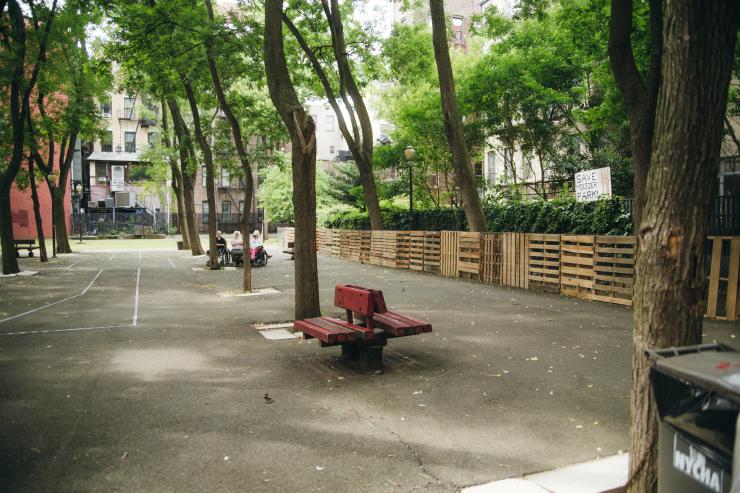

If our goal is to help build a society that can thrive in the era of climate change, we can’t simply put on a play about climate change, nor should we expect our audiences to simply consume a performance. Those two days of performance in the space were magical, but they were not the whole show. Building the world with the people who will inhabit it, the process of getting there, and of giving back afterwards—these are essential parts of the performance. Making theatre in the age of climate change requires us to intentionally practice equity on all levels, insistence and flexibility in tandem, and openness to constant delight and frustration.
Our key collaborators were the senior residents of Meltzer Towers and the fifth grade students from the nearby elementary school P.S. 63. We agreed we would offer ideas, ask questions, and together with the community, we would make decisions. In many challenging and humbling conversations, Celia Santiago, the President of the Tenants’ Association at Meltzer raised concerns that would come up again and again We are tired of people coming in and forcing their ideas on us without asking what we actually want.
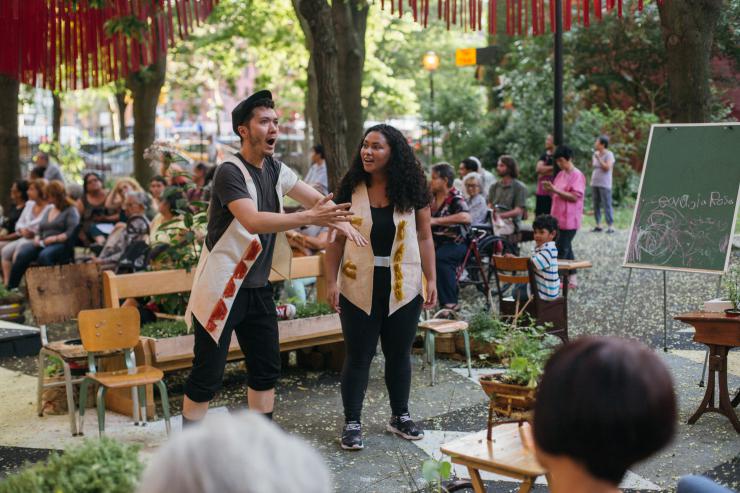

She never let us forget that we could not steer the ship alone. We led a series of workshops over the course of a year with the seniors and students to envision the Living Stage; to ask what they wanted from such a space, and how it could serve them. It was slow going at first. Few showed up. Many were skeptical of our ability to accomplish anything together and resentful of the past. We encountered the limits of imagination in a community that has experienced great neglect. Most suspected we were making false promises, talking big talk. Still, we showed up again and again. Still here. Me again. What should we do today? I’m back! I’m not leaving.
One day in the spring, I walked into the senior center, my jaw tight. The night before, some residents had stolen all of the plants we planted in the previous weeks. It was shocking and brought up fears about the legitimacy of our work. Some of the seniors pulled me aside. I can’t believe someone would do this. We’re trying to make something beautiful for everyone, and they just want to take things for themselves. It was music to my ears. We! We were trying!
We went on trying. We…
- Made an adopt-a-plant program to embrace the theft of our plants.
- Hit walls with language and hired teachers and actors who could speak those tongues.
- Adapted our design to the materials we found, all of which were reused and recycled.
- Overcame strangeness through games and shared stories across generations.
- Learned about climate change and climate equity and native plants.
- Wrote poems, songs, stories, about things we learned and our hopes for the future.
- Lost funding and reached out to local businesses, who surprised us with their generosity.
- Built up the design in layers over time for those watching from windows and benches every day.
- Planted out grasses and flowers into the senior center courtyard.
- Gifted plants to the community gardens who gave shelter to our plants.
- Gave away set pieces and props to community members to keep and cherish.
Our work was to create a lived experience of what is possible. The relationships created between old neighbors and new neighbors, the communion and critical thought in our art-making, the roadmaps that were forged from our struggles for funding, materials, communication, and permission—they are what is possible. The Living Stage NYC built one possible world envisioned out of, and for, our climate reality and our new political reality. Now, the work continues.


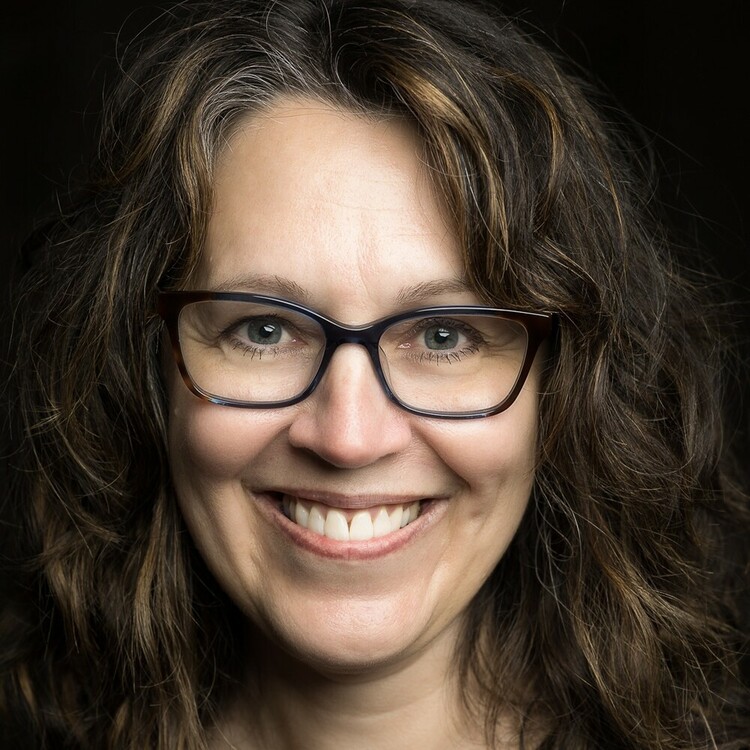


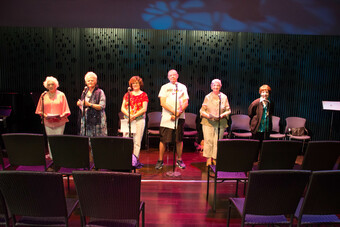

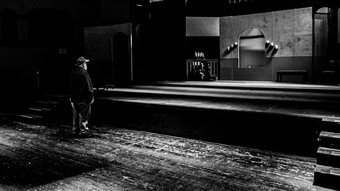


Comments
The article is just the start of the conversation—we want to know what you think about this subject, too! HowlRound is a space for knowledge-sharing, and we welcome spirited, thoughtful, and on-topic dialogue. Find our full comments policy here